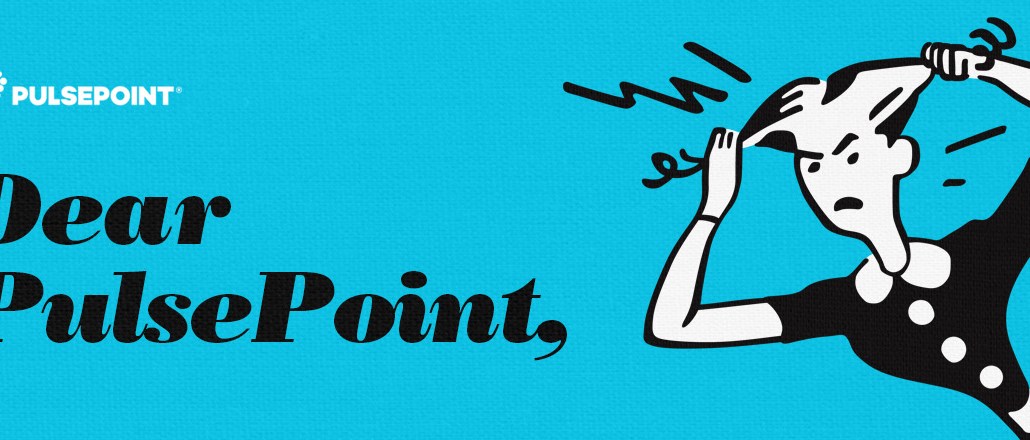
Dear PulsePoint,
I was so excited to see my financial brand’s ads front and center on the Wall Street Journal, but when I woke up this morning, I found them running next to coverage of Senator Warren’s recent excoriation of a top bank chief.
I thought that by blacklisting the bad actors, I’d be in the clear. But now audiences are getting the weird feeling that the Great Recession was brought to them by my brand, and I’m out the cost of the ad buy with no real hope of ROI! If blacklists aren’t enough, how do I keep my brand away from topics that are bound to make a bad impression?
Help me, PulsePoint. You’re my only hope.
Frantically,
An embarrassed advertiser
Dear Embarrassed,
Bad reputations are hard to shake. Try going to your high school reunion and convincing your old classmates that you’re anyone but your 17-year-old self. (Believe me, I’ve tried.) Once someone sees you in a certain light, it takes a lot to change their mind.
The same goes for your audience. If they see your ad next to something that rubs them the wrong way, the effect is going to carry over. The worst part is that it’s really, really hard to predict what they’ll find disagreeable: There are the obvious things like adult content, divisive issues and hate sites, but that’s only the tip of the iceberg.
Even the most whitebread of publishers can run articles or other content that gives a brand category, or something intimately related to it, a negative spin. British Petroleum had to tiptoe across a media minefield after their oil rig disaster, but even snack food brands have to worry about things like nutrition articles that might turn readers off from snacking. (We’ll get to tips for context avoidance later.) Bad news travels fast, and it tends to stick to whatever it touches.
So what’s a besieged brand to do? Well, there are two main tactics at the outset of a campaign for ensuring brand safety, and their usage is based on what you know — and what you don’t know.
If you already know where your brand will be safe (on specific sites, particular pages or publisher networks), you can write up a whitelist and give it to your ad tech partner. Like any good guest list, it will help keep the party at a manageable size (and party fouls to a minimum). Good partners make great bouncers.
At other times, you don’t want your reach limited to a small set of sites, but you definitely know where you don’t want your ads to show up. In that case, the blacklist is your way to go. But you already knew that.
You also know that blacklists and whitelists won’t always prevent the occasional catastrophe. That’s when you turn to partners that can understand a page’s context quicker than a career politician can sense the timbre of a rally crowd. Platforms offering this level of service will use techniques like keyword and sentiment analysis to put your ads on more friendly terrain.
This can mean avoiding decidedly brand-unsafe situations (like your airline ad running against coverage of a plane crash) to situations in which public sentiment is not on your side (like a consumer report that mentions your car brand… in a recall context). The reverse is possible, too. Want to run your ads with an article that trashes a competitor? Go wild!
So there you have it. Follow all my advice and you’re guaranteed to avoid embarrassing situations for your brand… most of the time. When the small disasters do hit, just remember to have a sense of humor — and some perspective.
We all learn as we go, but hopefully we’re helping you learn a little faster.
Sincerely,
PulsePoint
More in Marketing

Best Buy, Lowe’s chief marketing officers explain why they launched new influencer programs
CMOs launched these new programs in response to the growing importance of influencers in recommending products.

Agencies create specialist units to help marketers’ solve for AI search gatekeepers
Wpromote, Kepler and Jellyfish practices aim to illuminate impact of black box LLMs’ understanding of brands search and social efforts.

What AI startup Cluely gets — and ad tech forgets — about attention
Cluely launched a narrative before it launched a tool. And somehow, it’s working.





